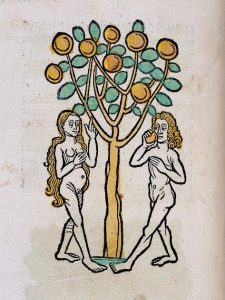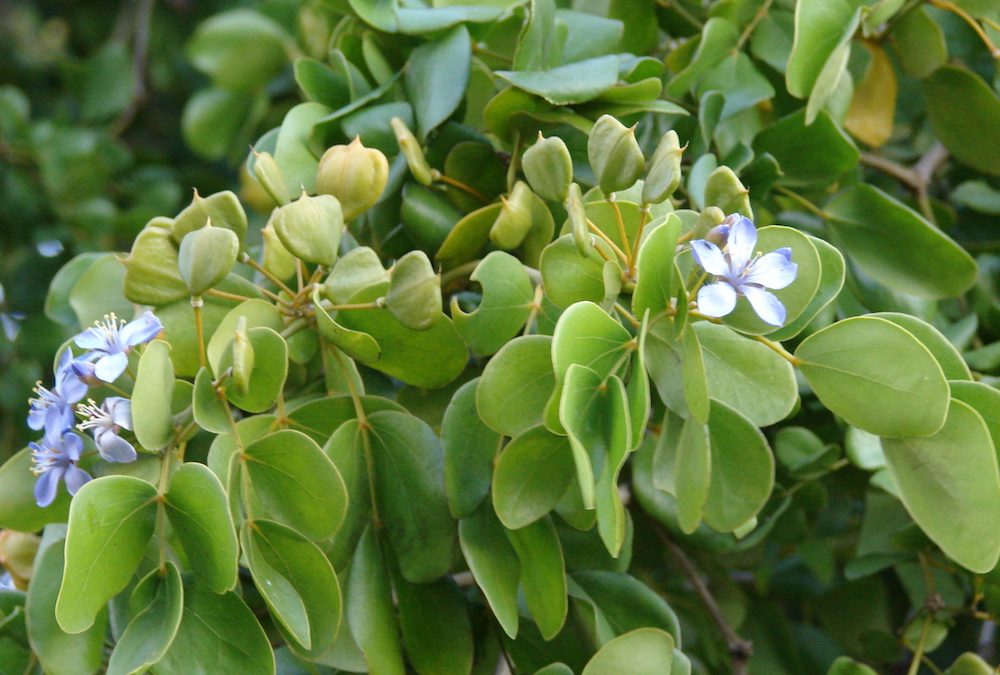Last month I wrote about some of what I had learned as a result of my study of a small island in the Florida Keys. I noted that I was often amazed at how much of history could be elucidated through a study of place rather than only through linear history. For me Lignumvitae Key was that place – it has allowed me to pull together information on what one would think are a plethora of unrelated threads. In that essay, I wrote about a remarkable tree after which the island was named, and its remarkable range of mechanical uses. Now let’s look at how Europeans were first introduced to Lignumvitae.
In 1491, a year before Columbus sailed to the New World, a natural history book was published in Mainz, Germany. The book, produced by Joseph Meydenbach was called Ortus Sanitatis or “Garden of Health”, and it built on earlier books that discuss the “virtues” and uses of plants, especially their medicinal uses. These books are generally known as “herbals”.
The Ortus is interesting in part because it goes beyond earlier herbals in that in addition to plants, it deals with fish, birds, land animals and geology, and even with the analysis of urine for medical diagnosis to help select treatments from the plants in the book. Many of Meydenbach’s plants are easy to recognize, but some plants and animals are pure fantasy. Perhaps the most bizarre description of a plant involved the mandrake root which was used to relieve pain. Its forked root was supposed to represent a man, and it wwas reported that if the plant were pulled up it would emit a shriek so horrible as to kill the harvester. Meydenbach, however tells his readers hot to handle this problem – one takes a dog to the plant and ties its leash to the plant. The harvester then is to put in earplugs and hit the dog so that it runs away and pulls up the plant.
 Fantastic images and stories like this make the Ortus an interesting and amusing read, but most importantly to me, the second edition of the Ortus, introduced an amazing plant that had never before been documented – the lignumvitae tree of paradise, or “Arbor vel lignum vitae paradisi”. These woodcuts from the Ortus are the artist’s conception of the tree. Clearly, the presence of a serpent, taken together with its name, tells us that the tree is supposed to be the tree of life from the biblical Garden of Eden.
Fantastic images and stories like this make the Ortus an interesting and amusing read, but most importantly to me, the second edition of the Ortus, introduced an amazing plant that had never before been documented – the lignumvitae tree of paradise, or “Arbor vel lignum vitae paradisi”. These woodcuts from the Ortus are the artist’s conception of the tree. Clearly, the presence of a serpent, taken together with its name, tells us that the tree is supposed to be the tree of life from the biblical Garden of Eden.
 Just to be sure this Lignumvitae tree was recognized as being the one from the Garden of Eden, Meydenbach also printed a woodcut of the tree with Adam and Eve standing beneath it.
Just to be sure this Lignumvitae tree was recognized as being the one from the Garden of Eden, Meydenbach also printed a woodcut of the tree with Adam and Eve standing beneath it.
The description of the first Tree of Life assigns it some remarkable “virtues”, namely that anyone who eats its fruit is strengthened with perpetual health, clothed in immortality, and protected from anxiety, weakness, and infirmity. One can easily see how to 15th century Europeans whose grasp of medicine bore almost no relationship to our modern scientific understanding, actually finding a tree that could do so many wondrous things for them would have enormous appeal.
Next time I’ll explain how this arbor vel lignum vitae paradisi tree and the Lignumvitae tree on the Florida island I was studying, Guiaicum sanctum, got hooked up, and why this was so important to European history.

